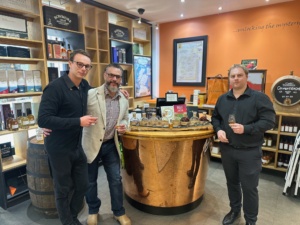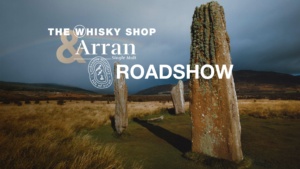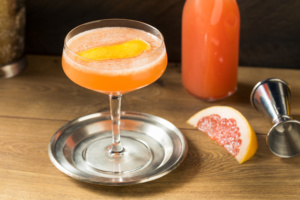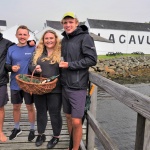Make It A Double
From sampling hundreds of whiskies to creating 50-year-old drams, The Balvenie's dream duo David Stewart MBE and Kelsey McKechnie confirm everything we already knew: that they have the best jobs in the world.
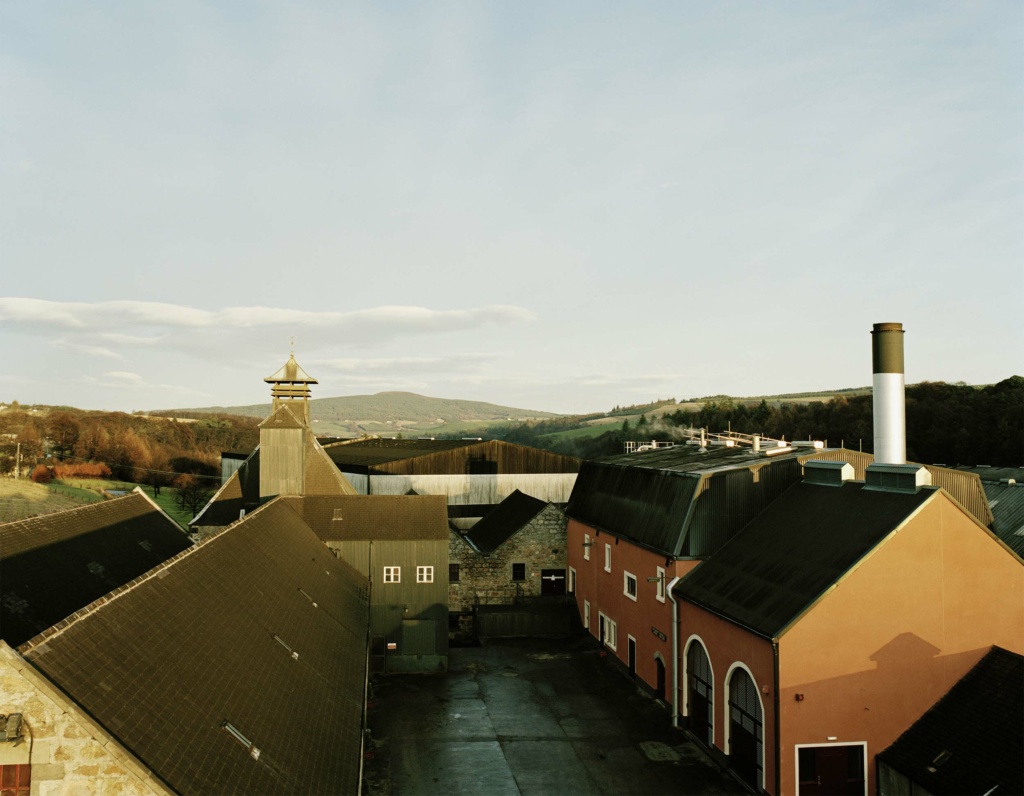 Hi David and Kelsey - what a team! As The Balvenie Malt Master and Apprentice Malt Master respectively, what does a typical working day look like for both of you?
DAVID: In normal times, before the current situation with Covid-19, I would be going to the distillery and making a few overseas trips to launch new expressions and speak to journalists. As I now work part-time for the company, I'm not in the office on a regular basis, so when I do go in it's mainly for sampling.
KELSEY: At the moment, I'm going into the office Tuesdays and Thursdays to sample. While we usually do most of our nosing in the office, we've always had the opportunity to go up to the warehouses and sample straight from the cask. David and I have been up there countless times together. Things like that will be so nice to get back to!
DAVID: We could be sampling between 30 or 40 whiskies a day. Occasionally in the past, I've spent a lot of time at the distillery and in our nosing room focusing on learning what is required to ensure consistency in our new and maturing stocks.
Are you finding more and more young people have an interest in whisky?
KELSEY: I think whisky is appealing to many more people over a range of demographics. A few years ago, people would have almost been a little bit embarrassed to drink it in a bar because they felt they needed to know so much about the dram they were ordering. I think one big thing that's driving change is that, nowadays, it's more about taste. People are ordering what they like because they like it, not necessarily because they know how big the distillery's stills are!
As you progress in your role, what do you hope to bring to The Balvenie in the future?
KELSEY: I hope to bring the same level of skill and expertise David has shown in the quality of The Balvenie products over the past 58 years. I love working on innovation products and I hope we can release more exciting products as the years develop. We have lots of innovations bubbling away in the background.
David, what made Kelsey the perfect choice for the Apprentice Malt Master role?
DAVID: Kelsey started as part of William Grant & Sons' graduate programme in June 2014. She worked in the lab carrying out spirit analysis and was also part of the company's New Liquid Development team. As Kelsey moved between our UK and Irish sites, she developed greater sensory and technical skills. We needed to get someone in to train as an Apprentice Malt Master alongside me and Brian Kinsman, as I can't be around forever! Kelsey was a natural fit.
Hi David and Kelsey - what a team! As The Balvenie Malt Master and Apprentice Malt Master respectively, what does a typical working day look like for both of you?
DAVID: In normal times, before the current situation with Covid-19, I would be going to the distillery and making a few overseas trips to launch new expressions and speak to journalists. As I now work part-time for the company, I'm not in the office on a regular basis, so when I do go in it's mainly for sampling.
KELSEY: At the moment, I'm going into the office Tuesdays and Thursdays to sample. While we usually do most of our nosing in the office, we've always had the opportunity to go up to the warehouses and sample straight from the cask. David and I have been up there countless times together. Things like that will be so nice to get back to!
DAVID: We could be sampling between 30 or 40 whiskies a day. Occasionally in the past, I've spent a lot of time at the distillery and in our nosing room focusing on learning what is required to ensure consistency in our new and maturing stocks.
Are you finding more and more young people have an interest in whisky?
KELSEY: I think whisky is appealing to many more people over a range of demographics. A few years ago, people would have almost been a little bit embarrassed to drink it in a bar because they felt they needed to know so much about the dram they were ordering. I think one big thing that's driving change is that, nowadays, it's more about taste. People are ordering what they like because they like it, not necessarily because they know how big the distillery's stills are!
As you progress in your role, what do you hope to bring to The Balvenie in the future?
KELSEY: I hope to bring the same level of skill and expertise David has shown in the quality of The Balvenie products over the past 58 years. I love working on innovation products and I hope we can release more exciting products as the years develop. We have lots of innovations bubbling away in the background.
David, what made Kelsey the perfect choice for the Apprentice Malt Master role?
DAVID: Kelsey started as part of William Grant & Sons' graduate programme in June 2014. She worked in the lab carrying out spirit analysis and was also part of the company's New Liquid Development team. As Kelsey moved between our UK and Irish sites, she developed greater sensory and technical skills. We needed to get someone in to train as an Apprentice Malt Master alongside me and Brian Kinsman, as I can't be around forever! Kelsey was a natural fit.
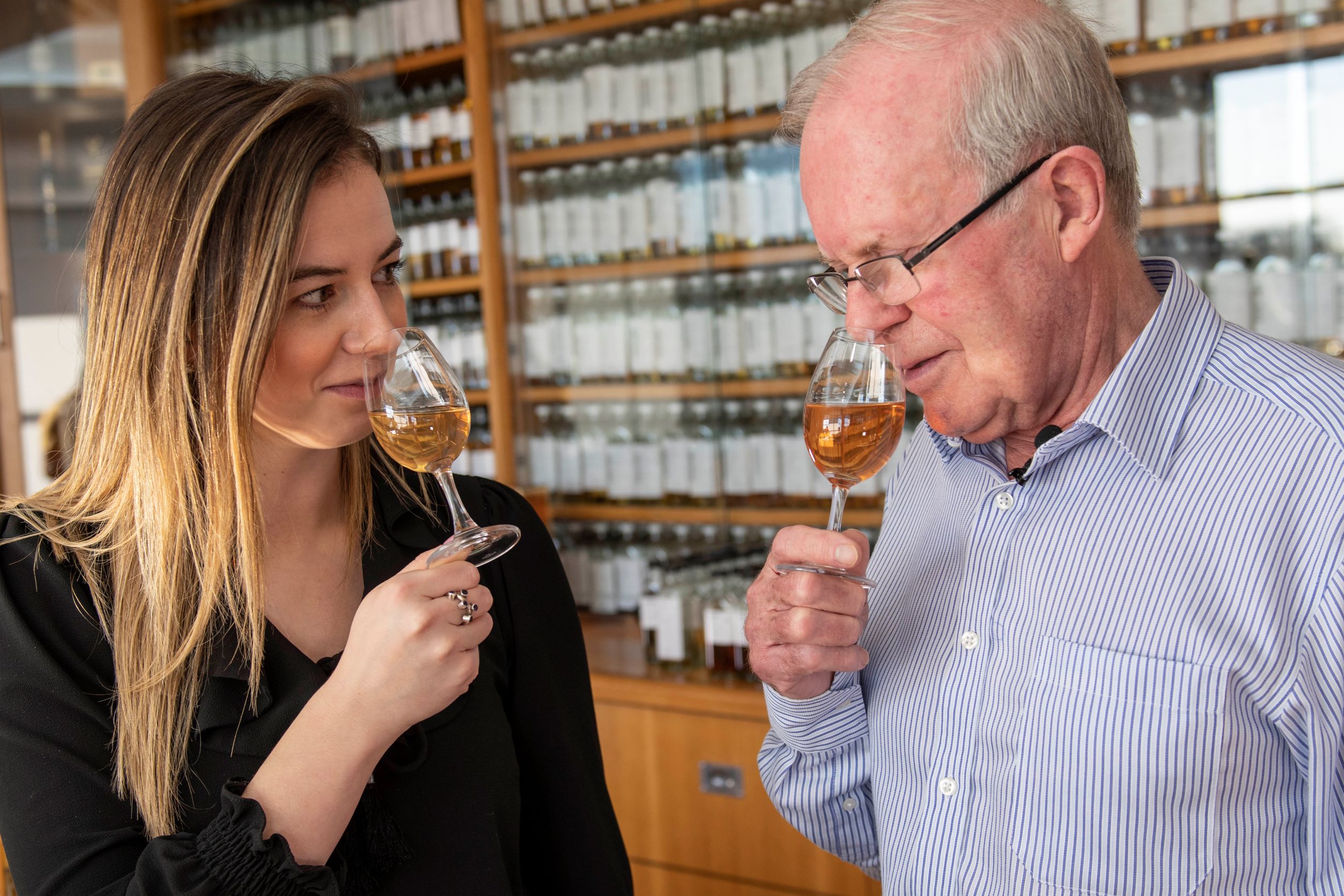 Those are a couple of good mentors, Kelsey!
KELSEY: I know. David's apprenticeship was about ten years long and Brian's lasted nine years... so I always joke that, in the spirit of competition, I need to shave a few years off!
David, what does it take to be a great whisky blender?
DAVID: People often ask me if I'm something sort of special, but if you get the training then I think most people could do the job. The main part of the job is the nosing, the ability to identify whiskies. We're not tasting the whiskies in the sample room - we're trained nosers - and it takes time to know how our whiskies should be.
Do you need to have a natural talent for nosing, or can it be learned?
KELSEY: The way I always think about nosing is that it's like using another language. So many people think they're not very good at it, but many people have an issue with the word association. As long as you keep using your nose, keep picking out flavours and describing them - as long as you keep in touch with that language - your skills will improve.
Since working together, what have you learned from each other?
DAVID: When we're nosing samples together, we may not always agree. It's good to have a discussion together and by doing this we can usually come up with the correct decisions.
KELSEY: One of the biggest learnings that David has taught me is certainly having patience. Nothing happens overnight in whisky and we're looking so far ahead. We're filling spirit today that might actually become a 50-year-old Balvenie one day, so patience is key. In fact, I might not even be around for the majority of the products we're creating. It's an amazing thought to have.
Those are a couple of good mentors, Kelsey!
KELSEY: I know. David's apprenticeship was about ten years long and Brian's lasted nine years... so I always joke that, in the spirit of competition, I need to shave a few years off!
David, what does it take to be a great whisky blender?
DAVID: People often ask me if I'm something sort of special, but if you get the training then I think most people could do the job. The main part of the job is the nosing, the ability to identify whiskies. We're not tasting the whiskies in the sample room - we're trained nosers - and it takes time to know how our whiskies should be.
Do you need to have a natural talent for nosing, or can it be learned?
KELSEY: The way I always think about nosing is that it's like using another language. So many people think they're not very good at it, but many people have an issue with the word association. As long as you keep using your nose, keep picking out flavours and describing them - as long as you keep in touch with that language - your skills will improve.
Since working together, what have you learned from each other?
DAVID: When we're nosing samples together, we may not always agree. It's good to have a discussion together and by doing this we can usually come up with the correct decisions.
KELSEY: One of the biggest learnings that David has taught me is certainly having patience. Nothing happens overnight in whisky and we're looking so far ahead. We're filling spirit today that might actually become a 50-year-old Balvenie one day, so patience is key. In fact, I might not even be around for the majority of the products we're creating. It's an amazing thought to have.
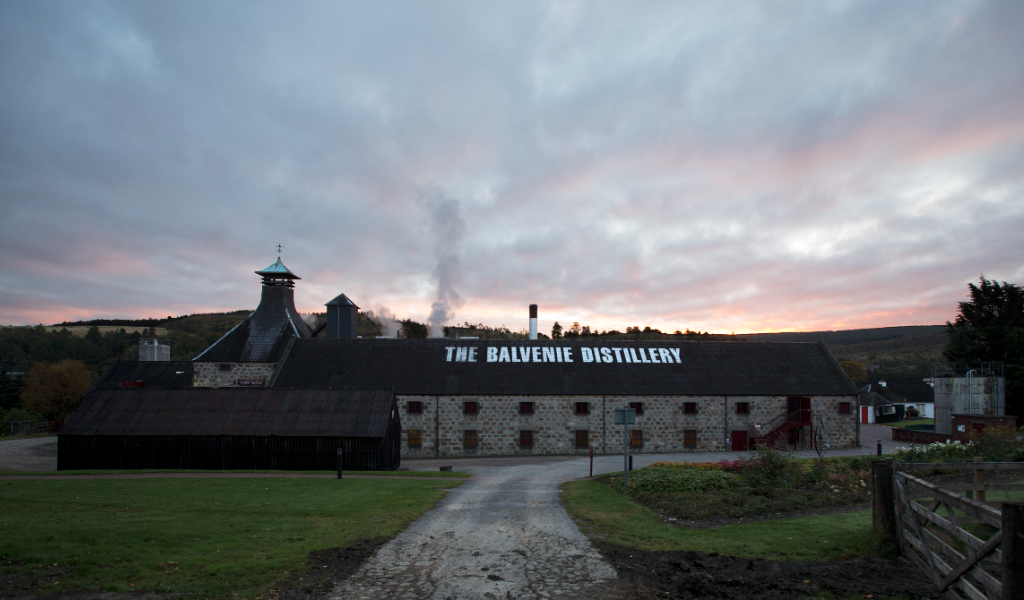 David, can you pick any highlights from an incredible career spanning almost 60 years?
DAVID: I think that the launch of The Balvenie DoubleWood 12 Year Old in 1993 has been one of my proudest moments. Not many whiskies stay in a core range for 27 years! I'm proud of how well it's done and how well it's liked.
This expression was one of the very first cask finishes - the word "finish" wasn't even mentioned back in the 80s. At the time, I didn't think I was doing anything special. I knew the difference between American oak and Spanish oak, and I knew something would probably happen transferring one to the other. Of course, "finishing" has now allowed the whole Scotch whisky industry to release a lot of different styles of whisky, from white wine finishes to red wine, Madeira, port, rum...
How did each of you get into whisky?
KELSEY: I've always been interested in whisky and have always shared a dram with my family. I studied biological sciences at university because I wanted to work in a lab, and when the opportunity came up to work in the William Grant & Sons lab, I really jumped at the chance! For me, it was the best of both worlds.
In my current role, I love being able to work with spirit profiles, carry out all of the routine analysis and also pair that with what I'm picking up on my nose. I feel very grateful, and very lucky.
DAVID: I started working for William Grant & Sons in 1962 just to get a job and to earn some money. I joined as a Whisky Stocks Clerk with my boss, Hamish Robertson, being the Master Blender. After two years doing mainly clerical work, Hamish brought me into the sample room to start my nosing training.
After ten years of training, I was very lucky that Hamish decided to leave the company and I was given the role in 1974 as the company's Master Blender. At 29, I was just two years older than Kelsey is now.
I held that role for the next 35 years before transferring on a part-time basis in 2010 to me current role as The Balvenie Malt Master.
That's quite a legacy that you're going to be handing over one day, David.
DAVID: That's right. Are you looking forward to that, Kelsey?
KELSEY: Absolutely!
David, as the industry's longest-serving Malt Master, it's no wonder you're trusted with the distillery's most precious casks to create The Balvenie's Tun releases. Can you tell us what makes these whiskies so special?
DAVID: A tun is a 2,000 bulk litre marrying cask, unique to our company. The releases are made up of limited stocks and the whisky used is generally over 21 years old, with some as old as 40 years.
David, can you pick any highlights from an incredible career spanning almost 60 years?
DAVID: I think that the launch of The Balvenie DoubleWood 12 Year Old in 1993 has been one of my proudest moments. Not many whiskies stay in a core range for 27 years! I'm proud of how well it's done and how well it's liked.
This expression was one of the very first cask finishes - the word "finish" wasn't even mentioned back in the 80s. At the time, I didn't think I was doing anything special. I knew the difference between American oak and Spanish oak, and I knew something would probably happen transferring one to the other. Of course, "finishing" has now allowed the whole Scotch whisky industry to release a lot of different styles of whisky, from white wine finishes to red wine, Madeira, port, rum...
How did each of you get into whisky?
KELSEY: I've always been interested in whisky and have always shared a dram with my family. I studied biological sciences at university because I wanted to work in a lab, and when the opportunity came up to work in the William Grant & Sons lab, I really jumped at the chance! For me, it was the best of both worlds.
In my current role, I love being able to work with spirit profiles, carry out all of the routine analysis and also pair that with what I'm picking up on my nose. I feel very grateful, and very lucky.
DAVID: I started working for William Grant & Sons in 1962 just to get a job and to earn some money. I joined as a Whisky Stocks Clerk with my boss, Hamish Robertson, being the Master Blender. After two years doing mainly clerical work, Hamish brought me into the sample room to start my nosing training.
After ten years of training, I was very lucky that Hamish decided to leave the company and I was given the role in 1974 as the company's Master Blender. At 29, I was just two years older than Kelsey is now.
I held that role for the next 35 years before transferring on a part-time basis in 2010 to me current role as The Balvenie Malt Master.
That's quite a legacy that you're going to be handing over one day, David.
DAVID: That's right. Are you looking forward to that, Kelsey?
KELSEY: Absolutely!
David, as the industry's longest-serving Malt Master, it's no wonder you're trusted with the distillery's most precious casks to create The Balvenie's Tun releases. Can you tell us what makes these whiskies so special?
DAVID: A tun is a 2,000 bulk litre marrying cask, unique to our company. The releases are made up of limited stocks and the whisky used is generally over 21 years old, with some as old as 40 years.
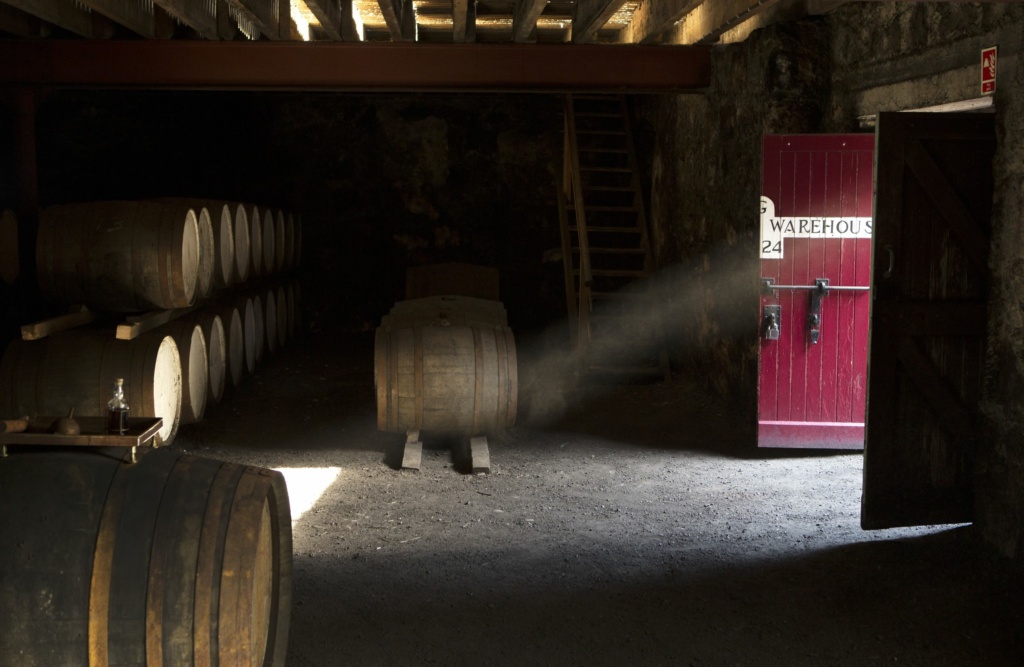 Tell us a bit about the latest release from the range, Batch 7.
DAVID: Batch 7 contains ten ex-DoubleWood sherry butts, four refill barrels and seven sherry hogsheads. It's bottled at 52.4% VOL and is free from chill-filtration. I describe it as rich, lush, and slightly peppery, with candied orange peel, lots of oak vanilla, some golden syrup, layers of honeycomb, toasted hazelnuts, with some spicy ginger and nutmeg at the finish.
When it comes to the cask selection process for each Tun release, where do you begin?
DAVID: The process usually takes a few weeks. Each release is made up in the sample room. We request many cask samples to be drawn at the distillery from different cask types and ages of The Balvenie. Kelsey, Brian and I sample each individually, before deciding how we might combine them. Once we're happy with out decision, we give instructions to the distillery as to which casks should go into the tun. The liquid then spends three or four months in the tun before we bottle it.
The Balvenie Distillery is steeped in tradition. Can you tell us a bit about how you make whisky there?
DAVID: At The Balvenie, we have a huge focus on our crafts. We continue to home-grow a portion of our barley and malt in our traditional maltings. We have our own coppersmiths who maintain our beautiful copper stills and make our sweet new make spirit, which is then filled into handcrafted barrels by our own coopers.
And what about something that whisky lovers might not know about The Balvenie?
KELSEY: Many people don't know that the distillery was originally intended to be named Glen Gordon, before taking its name after the local castle.
Tell us a bit about the latest release from the range, Batch 7.
DAVID: Batch 7 contains ten ex-DoubleWood sherry butts, four refill barrels and seven sherry hogsheads. It's bottled at 52.4% VOL and is free from chill-filtration. I describe it as rich, lush, and slightly peppery, with candied orange peel, lots of oak vanilla, some golden syrup, layers of honeycomb, toasted hazelnuts, with some spicy ginger and nutmeg at the finish.
When it comes to the cask selection process for each Tun release, where do you begin?
DAVID: The process usually takes a few weeks. Each release is made up in the sample room. We request many cask samples to be drawn at the distillery from different cask types and ages of The Balvenie. Kelsey, Brian and I sample each individually, before deciding how we might combine them. Once we're happy with out decision, we give instructions to the distillery as to which casks should go into the tun. The liquid then spends three or four months in the tun before we bottle it.
The Balvenie Distillery is steeped in tradition. Can you tell us a bit about how you make whisky there?
DAVID: At The Balvenie, we have a huge focus on our crafts. We continue to home-grow a portion of our barley and malt in our traditional maltings. We have our own coppersmiths who maintain our beautiful copper stills and make our sweet new make spirit, which is then filled into handcrafted barrels by our own coopers.
And what about something that whisky lovers might not know about The Balvenie?
KELSEY: Many people don't know that the distillery was originally intended to be named Glen Gordon, before taking its name after the local castle.
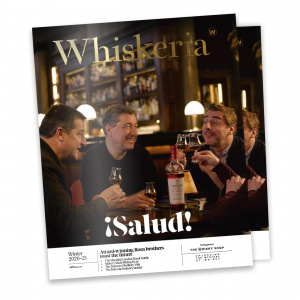 The original feature is our cover story in the Winter 2020-21 edition of Whiskeria, delivered to the door of W Club subscribers and also free with any Whisky Shop purchase in store or online. Click here to read the full Winter 2020-21 issue of Whiskeria online for free.
The original feature is our cover story in the Winter 2020-21 edition of Whiskeria, delivered to the door of W Club subscribers and also free with any Whisky Shop purchase in store or online. Click here to read the full Winter 2020-21 issue of Whiskeria online for free. 4.7/5 with 10,000+ reviews
4.7/5 with 10,000+ reviews
